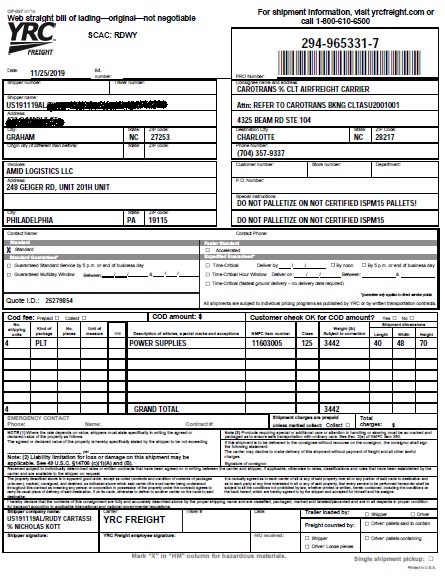|
|
Choose a destination country above and follow the steps to get your international shipping cost from the United States in just a few clicks.
Domestic Inland LTL Bill of Lading in Sea Freight from the USA
When coordinating international shipping from the USA, there’s often a domestic leg of the journey that moves cargo to a sea freight terminal before it goes overseas. This part of the process is handled by U.S. domestic Less Than Truckload (LTL) freight carriers.
LTL carriers help move smaller shipments from their origin point to a consolidator’s freight terminal, officially known as a Container Freight Station (CFS). Once at the CFS, your goods are loaded for international shipping using LCL (Less than Container Load) services.
What Is a U.S. LTL Bill of Lading?
An LTL Bill of Lading (BOL or B/L) is a document used to track and confirm the pickup and delivery of cargo within the U.S. It’s an important part of the process, but it only covers the domestic leg of the shipment. This is not to be confused with the LCL sea freight bill of lading, which applies to international shipping.

Don't mix up LTL with Less-than-Container Load (LCL).
Important distinction:
- LTL (Less Than Truckload): A domestic U.S. shipping method for small freight loads that don’t require a full truck.
- LCL (Less than Container Load): An international sea freight service for shipments that don’t need a full container.
Although these terms may sound similar, they serve distinctly different purposes in global logistics.
Why Is the LTL Bill Important?
When you choose the pickup or line-haul option during your booking with an international shipping company, you're authorizing a U.S. LTL carrier to transport your cargo to a CFS for overseas handling. The LTL BOL documents this movement and confirms:
- The type of commodity being shipped
- The number of packages and how they’re packed (boxes, crates, pallets, etc.)
- The total weight and dimensions of the cargo
When the shipment arrives at the Container Freight Station, the data from the LTL Bill is cross-checked with the warehouse receipt from the ocean freight carrier. This ensures consistency before the cargo is palletized and prepared for international shipping from the United States.
Understanding the Transition from LTL to LCL
It’s normal to see slight differences between the information on your U.S. LTL BOL and the final international sea freight (LCL) bill of lading. This can happen during handling, measurement, or palletizing at the CFS.
What matters most for customs and legal purposes overseas is the sea freight bill of lading. This is the official document that proves the cargo has been shipped internationally from the United States. Customs at the destination country will not accept the domestic LTL Bill of Lading (BOL) for clearance or delivery authorization.
Final Thoughts
For smooth and affordable international shipping, it’s essential to understand how the domestic and international legs of transport work together. Using the correct paperwork, especially distinguishing between U.S. Less Than Truckload (LTL) and international Less Than Container Load (LCL) bills of lading, helps avoid delays, confusion, and additional international shipping costs.
By working with a knowledgeable international shipping company and keeping your documents aligned, you can ensure that your cargo transitions efficiently from pickup in the U.S. to delivery abroad.


.png)


